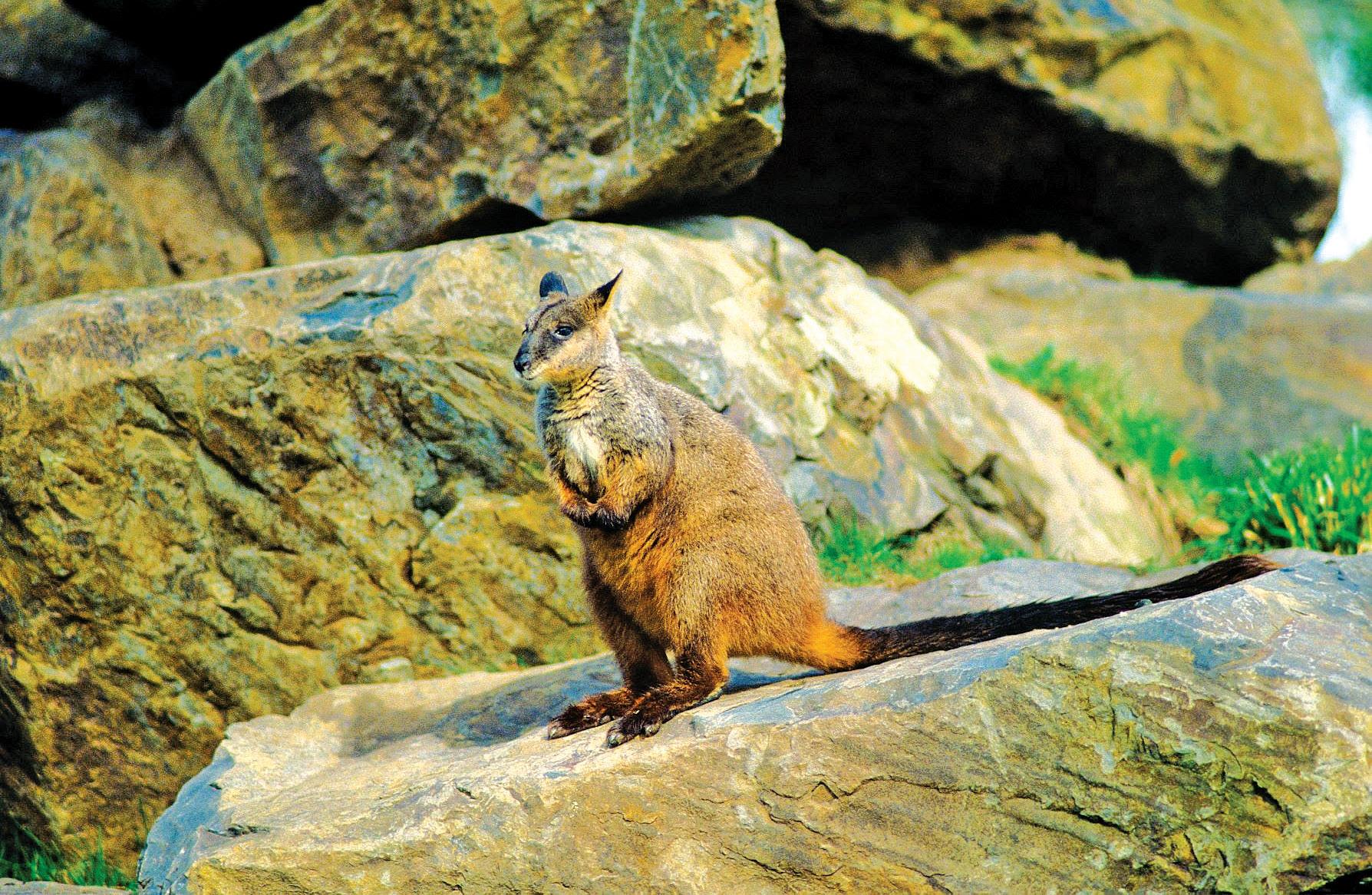
1 minute read
Do you have a 'brushie' in your backyard?
Wildlife Preservation Society Of Queensland
WILDLIFE Queensland launches a new guide for landholders to help save brush-tailed rock-wallabies.
Advertisement
Brush-tailed rock-wallabies (Petrogale penicillata) were once widely distributed in south-eastern Australia, but their numbers plummeted following European colonisation. Now, only small, isolated populations remain along the Great Dividing Range from southwest Queensland to western Victoria's Grampians. Habitat loss and fragmentation, feral animals and bushfires have contributed to the rapid decline in population numbers.
Brush-tailed rock-wallabies are listed as Vulnerable under the Commonwealth Environment Protection and Biodiversity Conservation Act 1999, Vulnerable in Queensland under the Nature Conservation Act 1992 and Endangered in New South Wales (NSW) under the Biodiversity Conservation Act 2016.
With single-digit populations reported in some NSW National Parks, the National Parks and Wildlife Service (NPWS) has initiated an emergency response to help save three of the state’s important brush-tailed rockwallaby populations (1).
Australian landholders can also play an important role in brush-tailed rock-wallaby conservation. Wildlife Queensland’s Brush-tailed Rock-wallaby Conservation Network (BTRWCN) has launched a fantastic new revegetation guide designed to help landholders both protect and recreate habitat to help save this vulnerable wallaby species.
The 16-page illustrated Saving the Brush-tailed Rock-wallaby: A
Landholder’s Guide is packed with stunning photography and detailed information about this vulnerable macropod and its habitat and conservation needs. It explains the actions needed to restore habitat quality and connectivity, reduce the risks from pest animals and plants, and minimise fire impacts for the species.
“Providing land managers and property owners with valuable tips on what to do to protect, recreate and enhance habitat for the brush-tailed rock-wallaby will benefit this species as well as other threatened native fauna,” says Wildlife Queensland project officer Paul Revie.
The guide was developed as part of a larger Brush-tailed Rock-wallaby Conservation Network project to improve conservation outcomes for brush-tailed rock-wallabies, funded by the Australian Government’s Environment Restoration Fund - Threatened Species Strategy Action Plan - Priority Species Grants. Saving the Brush-tailed Rockwallaby: A Landholder’s Guide in print is available free of charge on request from communications@wildlife.org.au










